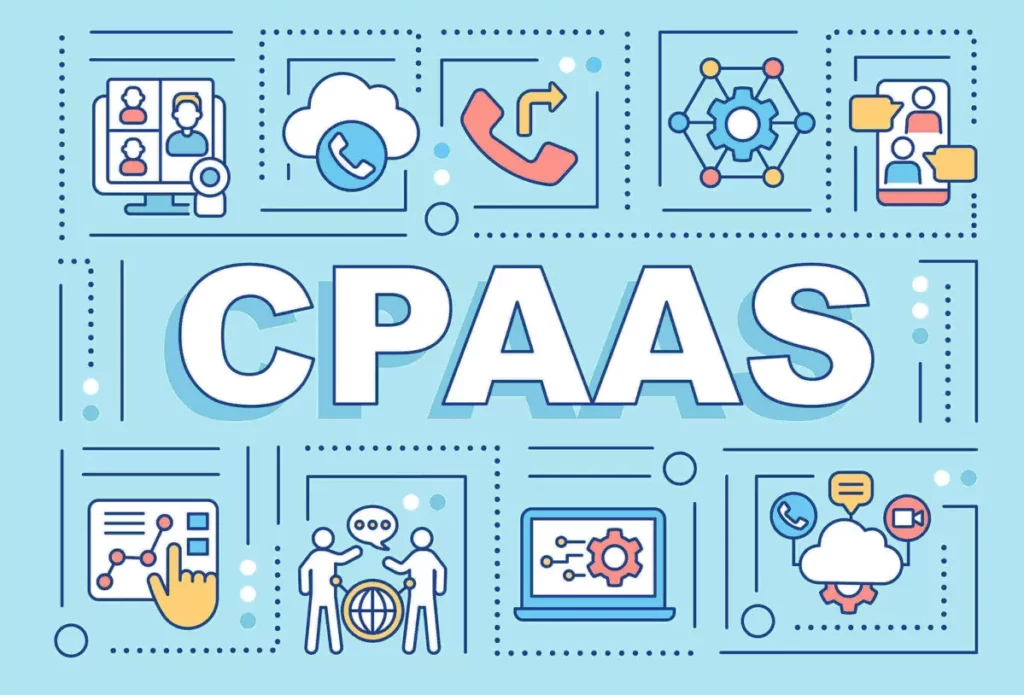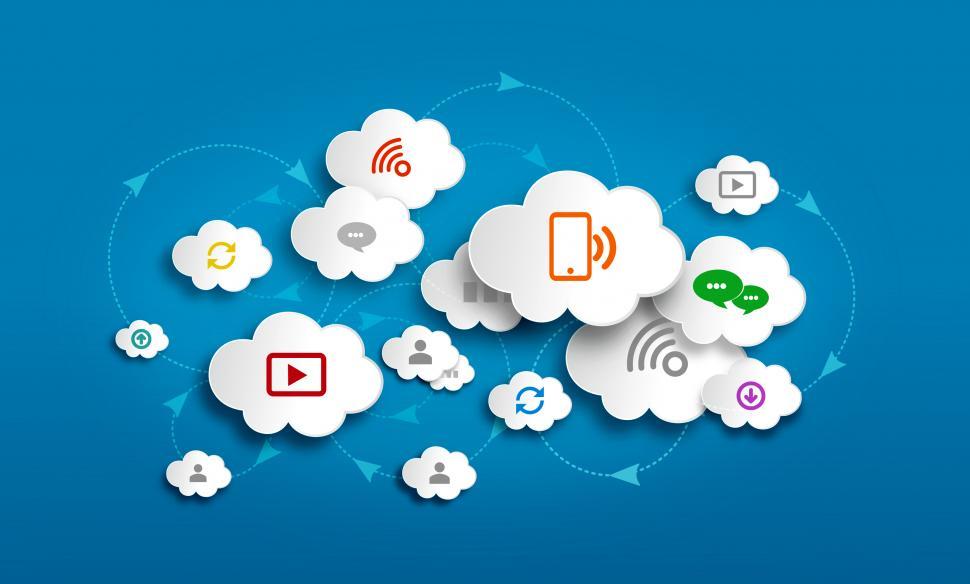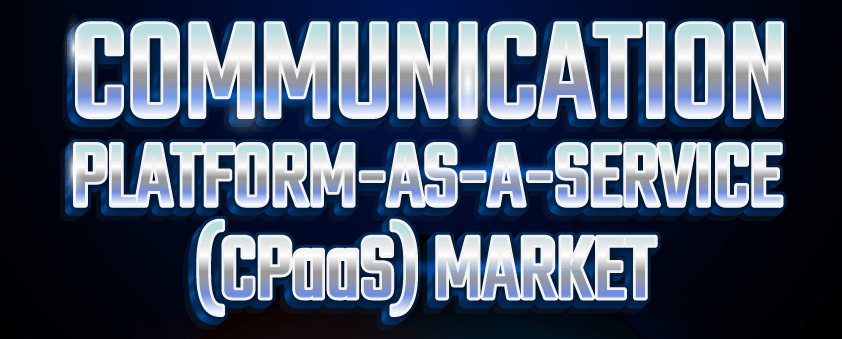Communication platform as a service or CPaaS allows businesses to directly add real-time communication features like voice calls, videos, texts, and more into their apps without building complex backend systems. CPaaS solutions use easy-to-use APIs and tools to provide scalable and cost-effective communication functions on demand.
In this simple guide, we will explain:
- What CPaaS is and how it works differently than traditional phone systems
- Popular CPaaS elements, including APIs, SDKs, cloud-based features
- Key benefits of CPaaS like flexible customization, affordable pricing, and fast development
- Common CPaaS uses in customer service, marketing, sales, and more
- Examples of major CPaaS providers and the solutions they offer
We aim to give you a clear overview of this cloud communication model in plain language so you understand if CPaaS can help your business communicate better.
What is CPaaS?
CPaaS stands for Communication Platform as a Service. I know all that jargon can sound intimidating, but don’t worry, it’s pretty simple! At its core, CPaaS allows businesses to directly add real-time communication functions like phone calls, videos, and texts into their apps and systems. It is done through easy-to-use tools and Application Programming Interfaces (APIs).
Traditionally, setting up robust communication features from scratch requires building complex backend infrastructure to handle call routing, messaging, and more. It’s an expensive and time-consuming process that only some businesses can manage.
CPaaS solves this problem by offering communication capabilities on an as-a-service model through the cloud. Instead of spending months developing everything in-house, CPaaS providers have already done the heavy lifting. They give you ready-made APIs, Software Development Kits (SDKs), and other tools to integrate features quickly.
Some key points about CPaaS:
- It provides building blocks like voice, video, and text APIs that you snap together based on your needs
- CPaaS runs on reliable, scalable, and secure cloud infrastructure, so you don’t have to manage servers yourself
- You only pay for what you use on a flexible pay-as-you-go basis, avoiding high upfront equipment costs
- The provider handles updates and maintenance, so your solution stays current
Under the hood, CPaaS uses Internet protocols like SIP and WebRTC to transmit data packets that enable real-time communication. But you don’t need to understand those technical details – the APIs abstract all that complexity away.
In summary, CPaaS gives businesses a simple yet powerful way to add customized communication solutions to their digital products and services in a cost-effective manner. Its flexible cloud model has made advanced features accessible to all.
CPaaS Benefits for Businesses

By now, you’ve got the gist that CPaaS makes integrating real-time communication much more straightforward than building it from scratch. But what’s really in it for your business? Let’s dive into some key ways CPaaS can supercharge your operations.
Speed and Agility
With CPaaS, you don’t have to wait months for IT projects. Developers get pre-built APIs, code samples, and support to add features like a pro. Need a chatbot? Add it in weeks, not years. This flexible, on-demand model means you can quickly adapt to changing markets.
Cost Savings
No more big upfront investments in equipment or hiring armies of engineers. With usage-based pricing, you only pay for what you consume. It makes CPaaS budget-friendly for both startups and enterprises. As your needs grow, costs scale up gradually rather than spiking.
Scalability
Is business booming? No problem. CPaaS empowers effortless scaling. Seamlessly increase concurrent users or add new regions without infrastructure headaches. Then, scale back when seasonal demand eases.
Omnichannel Engagement
Delight customers across channels by integrating voice, video, SMS, and more. Build customized experiences that blend media for seamless support. With CPaaS, you own the customer journey.
Innovation Edge
Get creative with communications! CPaaS inspires novel solutions like VR showrooms or AR tutorials. Its building blocks foster disruptive ideas that resonate with today’s customers. Stay ahead of the curve without an R&D lab. As you can see, CPaaS unleashes powerful benefits. It streamlines operations while keeping costs low – a winning formula for any business. Give your communications a boost with this flexible cloud model.
Popular CPaaS Functions
Now that we’ve explored CPaaS and why businesses benefit, let’s check out some essential functions you can implement. Think of these as the essential tools in your communication toolkit.
Voice and Video Calling
Add HD audio/visual connections between customers, employees, and devices. Configure features like call forwarding, conferencing, and call recording. Popular options include WebRTC and SIP trunking APIs.
Messaging
Reach customers personally with SMS, MMS, and other text-based channels—Automate workflows with messaging for everything from 2FA to appointment reminders. Social APIs let messaging extend to platforms customers already use.
Interactive Voice Response (IVR)
Streamline phone interactions with self-service IVR systems. Use voice prompts to route callers or gather input without an agent. Pair with AI for advanced conversational experiences.
Chatbots and Virtual Assistants
Give customers 24/7 digital help through chatbots. Train bots to understand intents and respond appropriately. Integrate with messaging apps, websites, and beyond for ubiquitous support.
Number Masking
Protect privacy and security with virtual numbers that shield direct contacts. Connect parties seamlessly while number masking maintains anonymity as needed.
Analytics
Make data-driven decisions by tracking KPIs like call duration, volume, and outcomes. Identify bottlenecks or spot upsell opportunities. Leverage insights to optimize communications.
The possibilities are vast when you combine these basic building blocks. Get creative and see how they transform your business! Does your customer service need a new dimension? CPaaS functions provide the tools.
CPaaS Use Cases
Now that we’ve explored the core CPaaS building blocks, let’s see them across different industries. Communication tools are only as suitable as the innovative ways people leverage them.
● Customer Service Supercharger: Speed up support with chatbots, co-browsing, and screen sharing. Integrate messaging for self-service FAQs—route callers straight to agents based on needs. Drive CSAT scores through seamless omnichannel support.
● Marketing Automation Maestro: Orchestrate campaigns through timed messaging, email, and push notifications. Nurture leads with personalized content based on behaviors. Analyze campaign metrics to optimize ROI.
● Healthcare Hero: Streamline appointment scheduling via the portal. Send reminders to reduce no-shows. Enable telehealth consultations for remote care. Track patient journeys to improve outcomes.
● Education Enabler: Deliver virtual and hybrid learning with interactive video classes. Monitor student engagement via chat. Connect with the community through messaging groups.
● Finance Firewall: Authenticate customers via 2FA SMS codes. Prevent fraud with one-time passcodes. Enable wire transfers over video IDV. Address security and compliance needs.
● Logistics Lifesaver: Dispatch drivers through optimized routing. Alert customers of delays via messaging. Offer dispatch support through voice calls. Track assets and shipments end-to-end.
As you can see, the possibilities are endless! CPaaS gives innovative teams tools to elevate any industry. Its flexible, scalable model empowers customized applications to streamline operations and enhance experiences.

Top CPaaS Providers
By now, you’ve hopefully gotten a sense of CPaaS’s potential. But who are the significant players providing these solutions? Let’s survey some top vendors in the market.
- Twilio – One of the earliest CPaaS pioneers, Twilio offers global messaging, voice, and video APIs. Its scale supports massive workloads for enterprises.
- Plivo – As an emerging leader, Plivo focuses on affordability and flexibility for SMBs. It provides competitive pricing and month-to-month plans.
- MessageBird – Known for its messaging specialization, MessageBird delivers solutions across 200+ networks worldwide. It aims to simplify global reach.
- Vonage – A telecom giant transitioning to the cloud, Vonage brings the reliability of a legacy phone provider to CPaaS. It’s APIs power mission-critical systems.
- Bandwidth – As a communications infrastructure company, Bandwidth delivers the plumbing beneath many CPaaS platforms. It ensures reliable connectivity.
- Infobip – With a footprint in 190+ countries, Infobip caters to global businesses needing international messaging support.
- CallHippo – This nimble startup focuses on voice solutions for startups and growing companies. Its personalized approach is favored.
While these represent some heavy hitters, the market remains fragmented. Various regional and niche specialists cater to vertical needs. Do your research to find the right cultural and technical fit based on your specific requirements. CPaaS is a thriving space with many quality vendors to evaluate.
Take the Next Step Toward Empowering Communications
If you found this guide on CPaaS insightful and want to explore how communication solutions can streamline your business, contact the experts at ZZ Servers. As an IT services provider for over 17 years, we understand small and medium organizations’ unique needs. Our certified professionals can evaluate your current processes, identify pain points, and recommend customized CPaaS integrations to take your operations to new heights. Whether you need omnichannel customer support, marketing automation, or industry-specific functions, we’ll work with you to develop a strategic communications roadmap for predictable, documented results. Call us today at 800-796-3574 to discuss how CPaaS can empower your business!
Conclusion
- CPaaS allows on-demand integration of real-time features like voice, video, and messaging through APIs and SDKs
- It offers a flexible, pay-as-you-go model for adding customized communication functions without heavy lifting
- Popular CPaaS tools include voice/video calling, text messaging, chatbots, IVR, and more
- Use cases range from marketing automation to healthcare, education, finance, and beyond
- Leading CPaaS providers include Twilio, Plivo, MessageBird, and others to explore
Frequently Asked Questions
Is CPaaS right for my business?
CPaaS benefits vary based on your needs. Consider factors like communication goals, technical skills, and budget. CPaaS truly shines for omnichannel support, marketing automation, and industries requiring customized real-time engagement at scale. Analyze your processes to see where CPaaS integrations could streamline operations and enhance experiences.
What programming skills are required?
CPaaS minimizes the need for advanced coding through user-friendly APIs and tools. Basic skills in languages like JavaScript, PHP, Python, or C# allow you to leverage pre-built code samples. CPaaS providers also offer documentation, tutorials, and support to get started without extensive development backgrounds.
How do CPaaS and UCaaS compare?
While both provide communications functions through the cloud, CPaaS focuses on integrating specific features into your applications. UCaaS offers full-fledged unified communications solutions that replace traditional phone systems. CPaaS brings agility, while UCaaS prioritizes comprehensive communication suites and management. They are often used together.
What security measures do providers take?
CPaaS vendors recognize the importance of security. They implement safeguards like encrypted transmission, authentication protocols, DDoS protection, and regular audits. Compliance with standards like SOC 2, HIPAA, and GDPR also eases risks. Providers maintain high-availability networks to ensure uninterrupted, secure services. Due diligence helps determine the best cultural and technical fit.
How much does CPaaS typically cost?
Pricing depends on features, volume usage, and provider. Most charge low monthly rates and pay-per-use based on metrics like API calls, minutes, and messages. Budget $500-1000 per month for essential to moderate integrations. At scale, rates lower with volume discounts. On-boarding and professional services also factor in. Providers offer calculators to estimate costs.


